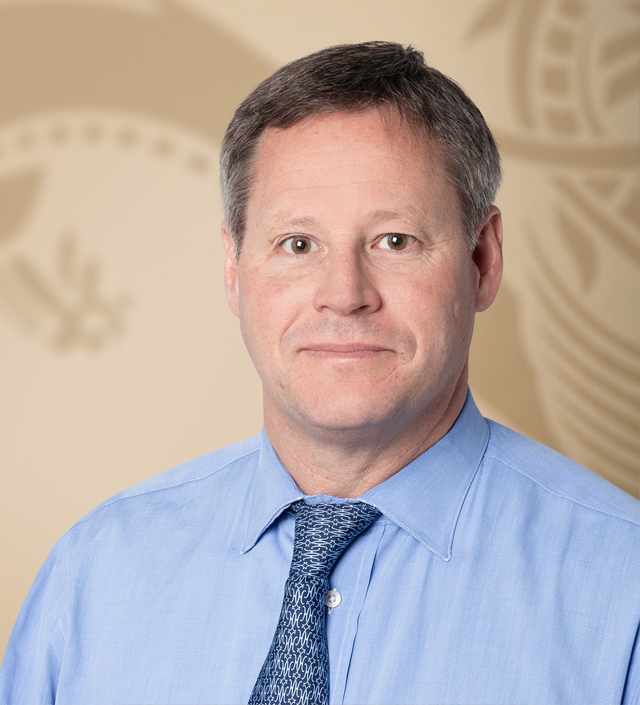Author’s note: In my book “Money Mountaineering,” I describe six fundamental principles that I believe can help an individual navigate the world of money. Shortly before the book was published in 2021, I posted a series of six essays expanding on each of those principles. Below is the first of those essays, which I hope demonstrates that the principles I espouse remain valid, even as the world around us has changed dramatically since the book was published.
Principle #1: Adapting to Change
“Everything changes a little as it should. Good ain’t forever, and bad ain’t for good.”
— Roger Miller from “Lou’s got the Flu”
I learned a lot from my mathematician father and with the many lectures he gave me growing up, there was almost always music playing in the background. Roger Miller’s songs formed the soundtrack to many of my childhood Sunday afternoons.
I always listened to the words of the songs and from the men and women who sang them I learned even more. As rigid and clear as my father’s views and teachings usually were, he was always open and curious about the world around us and how it can change — in unpredictable ways that can render one’s normal survival strategies a recipe for suffering.
As a precocious child in the 1930s and 1940s, my dad watched as the world run by the grown-ups got turned inside out and upside down for reasons that people still argue over. Geography must have been a particular challenge for his elementary school teachers. World maps, only recently revised to reflect the geopolitical shifts caused by World War I, became a moving target. Whole fields of study had to be modified on the fly to keep up with events, while only the oldest and most solid academic subjects remained the same. And this doesn’t even consider the socio-economic and geopolitical changes that were occurring in real-time disrupting normal life outside of school.
The list of academic subjects unaffected by World War II was relatively short. Astronomy and science where new discoveries come more slowly could be considered one. Ancient history and classic literature were perhaps two others with a long lead time between the writing and the recognition of a work’s value, but the most unchanging of all fields was and always has been mathematics. That is a very good thing since it is through mathematics and mathematical thinking that we can understand the nature of change itself.
We are not in a time of war in the U.S., but whatever changes this country is going through now, they seem as dramatic to me as any I have seen in my 66 years on earth, and I feel grateful to my father for having passed on to me the wherewithal to use a mathematical lens to consider what is happening around us.
I am an actuary and not a theoretical mathematician and I haven’t used the gifts my father gave me in the same way as he did. Rather than attempt to climb the highest peaks of mathematical abstraction as he and his colleagues have, I chose to apply the actuarial/mathematical perspective to the more mundane world of Money. It is an area where I can use the skills he taught me to separate the signal from the noise, and it is an area where I think some of my insights can help others.
In “Money Mountaineering,” I lay out six Foundational Principles of Holistic Financial Wellness.
Holistic Financial Wellness Principle #1 states that “Every person’s values, objectives, and financial situation are unique and multi-dimensional. Therefore, make every financial decision consistent with who you are, considering the totality of your own specific financial picture.”
Putting aside whether “who you are” is changing as the world changes around you, to apply this principle effectively, it is critical to understand and be clear on your “values, objectives and financial situation.” Reading “Money Mountaineering” won’t help you determine whether and how your values have changed — but the tools I provide might help you better understand how your financial situation and its relationship to the financial world, in general, has changed, and by understanding that, you can, if warranted, take a fresh look at your objectives — where you want to hike, climb or camp in the financial wilderness.
In “Money Mountaineering” I described in some detail my own financial situation and the complicated set of investments and income-generating ventures I was involved with, but things change — and sometimes, as Roger Miller says, “everything changes.” In my case, it was almost everything and the changes were far from “little.”
For me, losing my home and everything in it in a wildfire that raced through my part of the world two years ago was just the beginning. Now, instead of living on 8.5 acres in the relative solitude of backcountry Sonoma County, I live near downtown Santa Rosa in a rented house that I have filled with a mix of new rental furniture (provided by my insurance company) and well made, used furniture that I purchased from local merchants or received as gifts from friends and neighbors. I have also replaced all the books and technology (phones, appliances, etc.) in my life so I can be more engaged with the larger world around me.
That process has been both transformative and educational as I have developed connections with dozens of local merchants and neighbors who are now an essential part of my new situation. I am the same person I was before the fire, but my network of friends is different as well as the community that I am a part of. And those changes have had a large impact on not just my financial objectives but what my hopes, dreams, and fears are about the future.
On top of that, I see the economic and financial markets undergoing dramatic change as well. These kinds of changes are much more familiar to me as I have been watching markets evolve and change continuously for over 40 years. Not that the environment is exactly like anything I have seen before, but the forces at work are, at least to my eyes, the same as they’ve been for decades.
So what does that mean for the financial steps I plan to take in the near future? Well, the first thing I am doing is placing a higher value on real assets than I have in the past. Much of the furniture I purchased (or was given to me) is old and not only useful but in many cases is better made and more durable than what I can get new. Not only that, but with inflation higher than it has been in decades I believe that my new acquisitions are likely to increase in value rather than depreciate as most new things often do. In terms of my invested assets, I have shifted some financial assets into collectibles that I like having around like comic books, coins, and old books.
More generally, I am now recognizing that the relationships I have with my community in Santa Rosa are among the most precious components of my life that exist. I am learning how to nurture and grow those relationships and one of the best ways I have discovered for doing that is through giving and receiving gifts.
In Chapter 15 of my book, I make a case for the “gift economy” and now for the first time in my life, I am getting an opportunity to participate in one that is growing here in my new neighborhood in a way that may bear some surface similarities to the parking lot of a Grateful Dead concert (the gift economy I am most familiar with) but is on a larger scale and potentially more sustainable and permanent than a caravan of buses following a band from town to town.
Whether a gift economy can take root and grow in something as large as a city or a county is a question that I don’t know the answer to, but right now I am simply adjusting my financial plan to the realities in my environment and the new financial situation I find myself in.
I hope this essay will give my readers a fuller understanding of HFW Principle #1 and how to apply it to one’s own financial life. In particular, it is important to know that when making a financial plan, using this principle is not a “set it and forget about it” proposition, but rather a step that once undertaken must be reviewed periodically as you and the world around you change.
In future essays, we will take a deeper look at the other five principles, but consider this as me sharing my first step back towards holistic financial wellness. I am glad to have you along for the journey.
Peter Neuwirth, FSA, FCA, has held actuary leadership positions at a number of consulting firms. Currently a fellow of the Society of Actuaries and the Conference of Consulting Actuaries, Pete regularly consults with the largest corporations in the world about their retirement plans with a focus on time risk and money. He is the author of “What’s Your Future Worth?” and “Money Mountaineering.” Pete is also a senior consulting actuary for CapAcuity, a member of the University of Illinois Academy for Home Equity in Financial Planning and the outside director at Rael & Letson. He is a longtime resident of Santa Rosa, Calif.







